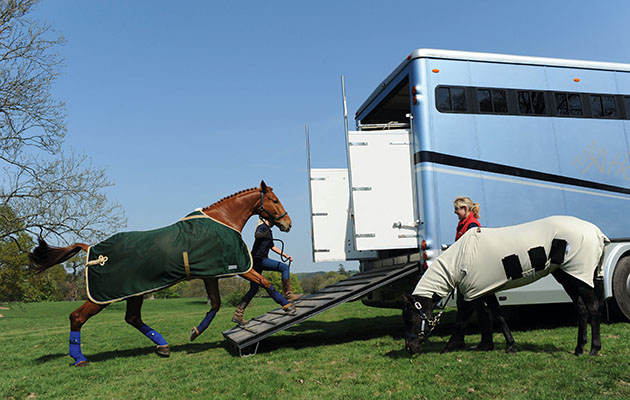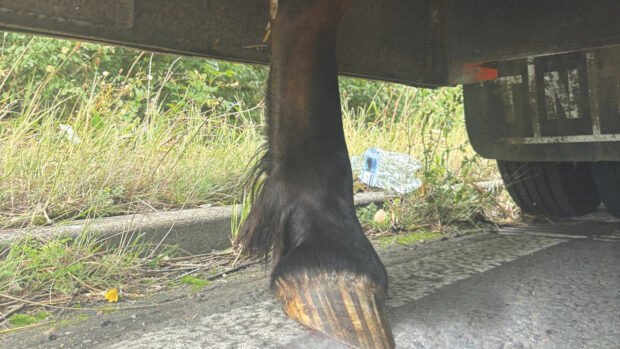Jason Webb of Australian Horse Training is a renowned UK-based horse trainer with a passion for starting young horses, solving equine problems and teaching riders of all abilities and ambitions develop and strengthen the partnership they have with their horses. Here Jason helps one H&H forum user with how to train a horse to stand quietly on a horsebox while at a competition
Q: Training to stand quietly on the lorry: “Has anyone got any successful methods of encouraging a youngster to stand quietly on the lorry on arrival at shows? Loading and travelling isn’t a problem but once at a show and when she can hear other horses, my mare becomes agitated and just wants out. It doesn’t matter if the ramp is left up or put down, she just starts throwing herself about. Obviously I’m hoping this will improve with regular outings but at the moment I’m struggling to get her tacked up as I go to training and shows by myself and she is literally throwing herself against the partition and leaning on it until she is allowed out. I’m wondering if clicker training could help in this situation but any other ideas would be gratefully received as I don’t want an injured horse or broken partition. Travelling with a companion is sadly not an option.”
A: Hello!
How easy this is to fix depends on your horse’s levels of anxiety on the box. Some horses go onto the box and are immediately wide-eyed, anxious and fretful, and this will only exacerbate when you arrive at a new venue. Whereas others demonstrate the behaviours you have described due to being plain impatient. It is most likely that your horse has a combination of anxiety and impatience, which manifests itself when you arrive at a new environment. Her adrenalin will increase, and in a flight animal, this means that she will have an overwhelming desire to move. She will also be anticipating being taken off the box, which will only increase her impatience.
I would start at home, by teaching your horse the word “stand” using a tying up exercise, for which you could incorporate some positive reinforcement techniques. You may find that she demonstrates similar behaviours if she is left on the yard on her own, if her friends leave her, or if you tied her to the side of the horsebox at events. Therefore, a tying up exercise and responding to the word “stand” will help in a number of situations, both on the ground and when ridden. I have a great tying up exercise called “standing on the tie”, which is available via www.yourhorsemanship.com that you might want to have a look at.
To work on the specific problem of keeping her quiet on the horsebox, you have to think about her mindset in this situation; “I don’t want to be here, I want to be out there”. Therefore, you need to take away or change that desire to be “out there” by making the right thing easy and the wrong thing difficult.
Continued below…
Related articles:
When your mare is on the box and starting to “throw herself round”, take her off the box and immediately put her on the lunge for a few circles, before putting her straight back on the box. Leave her to stand, and as soon as she starts stomping again, repeat the exercise. She will begin to realise that when she comes off the box she has to work, and when she is on the box, she is left to stand and relax. I would recommend that you do this process two or three times on outings where you don’t need to compete and you use them purely as training for this problem, bearing in mind logistics such as parking on grass with enough room to lunge.
I have been given a horse that has a severe case of this particular problem, although his is more fear related. In addition to doing the above exercises, I am experimenting with supressing his senses using earplugs and limiting his vision when he is on the box (much like using blinkers or pacifiers with racehorses). I am doing this in the same way as I do all my training; bit by bit. I will start in a safe environment that my horse is comfortable in, before progressing to the yard, then the horsebox. When horses have high levels of anxiety, they cannot learn, so it takes a long time to get these problems to a manageable level. Therefore, it will be interesting to see whether by taking away a sensory input, you can reduce their anxiety to a level where they can learn and improve — I will keep you posted!



